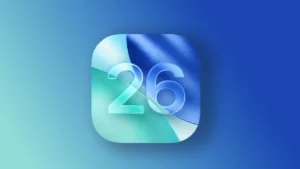If your iPhone has become slow and the battery is draining much faster since updating to iOS 26, you are not alone. Many users, like those in this Apple Community discussion, report that apps take longer to open, animations feel laggy, and battery life is noticeably shorter immediately after the update. This is often a temporary issue caused by the intensive background processes required for a new OS, but it can also be a sign of software bugs or misconfigured settings.
In this article:
ToggleWhy Performance and Battery Suffer After an Update
A major software update like iOS 26 requires your iPhone to do a lot of work behind the scenes. The system must re-index all your files for Spotlight search, scan your entire photo library to enable new features, and re-optimize all your applications. These tasks are CPU-intensive and consume a significant amount of power, leading to temporary sluggishness, heat, and battery drain. While this usually resolves itself, sometimes bugs in the new OS or outdated apps can cause these problems to persist.
How to Fix Slow Performance and Battery Drain on iOS 26
Work through these steps to get your iPhone’s performance and battery life back to normal. It is highly recommended to start with the first few solutions, as they resolve the issue for most people.
1. Wait for Background Processes to Complete
This is the most crucial first step. Your iPhone needs time to finish its post-update setup. Performance and battery life should normalize on their own.
- Leave your iPhone plugged in and connected to a stable Wi-Fi network overnight.
- Allow at least 24 to 72 hours for all background tasks to complete. Avoid heavy use during this initial period if possible.
2. Update to the Latest iOS Version
Apple often releases small follow-up updates (e.g., iOS 26.0.1) to fix performance bugs and battery drain issues discovered in the initial release.
- Go to Settings > General > Software Update.
- If an update is available, tap Download and Install.
3. Identify and Manage Power-Hungry Apps
iOS allows you to see exactly which apps are using the most battery, helping you pinpoint the source of the drain.
- Go to Settings > Battery.
- Scroll down to see the list of apps ranked by battery usage.
- If you see an app using an unusually high amount of power, especially in the background, consider limiting its background activity or uninstalling it temporarily.
4. Update All Your Apps
Developers update their apps to ensure they are optimized for the new iOS version. Running outdated apps can lead to poor performance and battery drain.
- Open the App Store.
- Tap your profile icon in the top-right corner.
- Tap Update All to install the latest versions of your apps.
5. Limit Background App Refresh
This feature allows apps to fetch new content in the background, but it can be a constant drain on your battery and system resources.
- Go to Settings > General > Background App Refresh.
- You can turn the feature Off completely, or selectively disable it for apps that don’t need to be constantly updated.
6. Force Restart Your iPhone
A force restart can clear out temporary files and resolve minor software glitches that could be causing lag or draining your battery.
- Press and quickly release the Volume Up button.
- Press and quickly release the Volume Down button.
- Press and hold the Side button until the Apple logo appears, then release.
7. Check Your Battery Health
A degraded battery will struggle to hold a charge, and this becomes more apparent with the demands of a new operating system.
- Go to Settings > Battery > Battery Health & Charging.
- If the Maximum Capacity is below 80%, the battery is considered worn and may be causing performance throttling. Consider getting the battery replaced by Apple.
8. Free Up iPhone Storage
When your iPhone’s storage is nearly full, the operating system has less room to operate, which can cause significant slowdowns.
- Go to Settings > General > iPhone Storage.
- Delete or offload unused apps, large videos, or other files to free up several gigabytes of space.
9. Reset All Settings
If performance issues persist, resetting all settings can fix underlying software conflicts without deleting your personal data.
- Go to Settings > General > Transfer or Reset iPhone.
- Tap Reset > Reset All Settings.
- You will need to re-enter your Wi-Fi passwords and reconfigure your settings afterward.
If none of these solutions work, contact Apple Support for further diagnostics.


